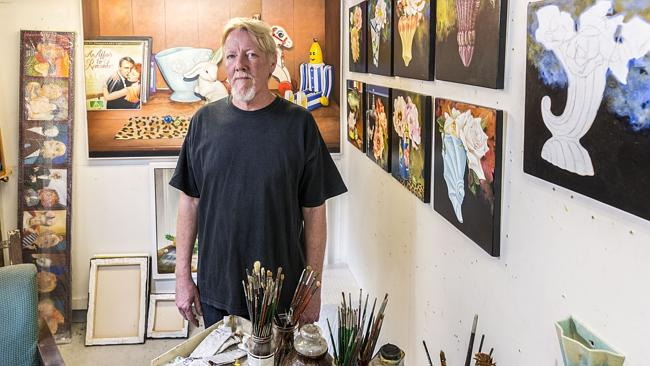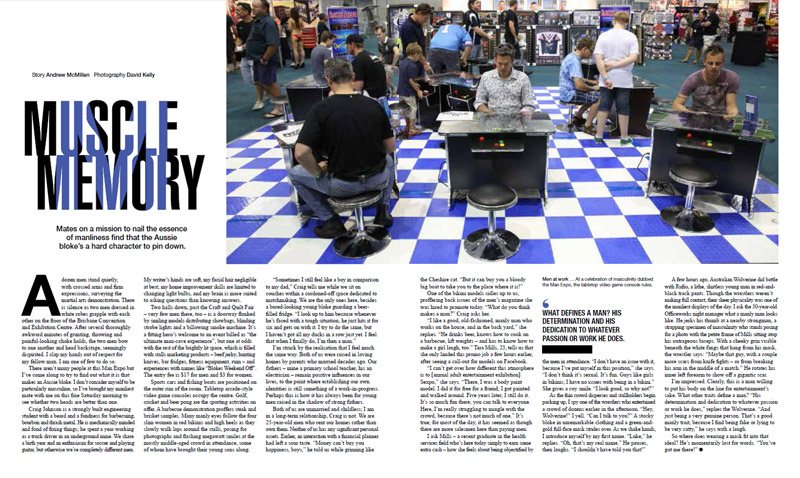The Weekend Australian Review story: ‘Artistic Insight: Stephen Nothling’, October 2015
A story for the October 24 issue of The Weekend Australian Review. Excerpt below.
A visually impaired Brisbane painter turns ordinary street scenes into extraordinary works of art.
The house on the corner of Louisa Street is designed to catch the eye. It is painted pink, with purple gutters, for the simple reason that he always wanted to live in a pink house, though shocking the neighbours was a pleasant side effect, too. Though largely hidden by greenery, his friends like to refer to it as “the jewel of Highgate Hill”. He walks out the front gate, pausing to shut it so that his two small dogs are confined to roaming the yard and barking at passers-by. Held in his left hand is a white cylinder that he periodically consults while climbing the footpath as it rises to a crest, revealing the skyscrapers and construction cranes of Brisbane in the distance. Since buying the house on the corner in 2001, walking this route has been an entrenched part of Stephen Nothling’s daily routine. Now, this route has become art.
When unfurled, the cylinder becomes a long sheet of paper that details the gallery layout of the artworks that comprise his upcoming exhibition at the Museum of Brisbane. The star of the show is this unremarkable street in the city’s inner-south. On a map, Louisa Street lies at the edge of two suburbs, which is why Nothling has chosen to name it The Last Street in Highgate Hill. The museum exists to capture the people, places and stories of its inhabitants, and when director Peter Denham approached Nothling to present an idea for its ongoing Document series, the artist replied that what he’d really like to do is head out the front gate and paint the street he walks up and down every day.
Nothling, 53, carves a striking figure as he strides up a street he knows better than anyone on the planet. Tall, blond and pale, a white shirt hangs loosely from his thin frame atop blue jeans and scruffy black shoes. Between June 2014 and June 2015, Nothling worked most days on this collection of paintings, which depict the beautiful minutiae of Queensland urban life. With a camera, he captured every house on the street, then used those images as reference points to work from, occasionally dashing back out to inspect smaller details — such as particular colours and materials — from up close, with his own eyes.
His work reveals a forensic attention to detail, a point influenced by the fact Nothling’s eyes are different than most. He was born with oculocutaneous albinism, a genetically inherited condition that affects around one in 20,000 people worldwide. The vision in his right eye operates at about 10 per cent functionality, thanks to a cataract and deformed nerve endings at the back of the lens, while missing parts of the cellular structure in his left eye means he has a significant blind spot, which he describes as a “black hole of nothingness”. His visual impairment resulted in social isolation while growing up in the seaside Queensland city of Redcliffe; as a child, he was never picked for team sports. “When you can’t be a player, you become introspective,” he says.
He also wore thick, Coke-bottle glasses in an attempt to correct his vision. It didn’t work. An eye specialist once told him that if he truly knew how other people see the world, he’d be crushed by depression. It is ironic, then, that for three decades Nothling has built a career out of looking at things and painting what he sees.
To read the full story, visit The Australian. Above photo credit: Glenn Hunt.

